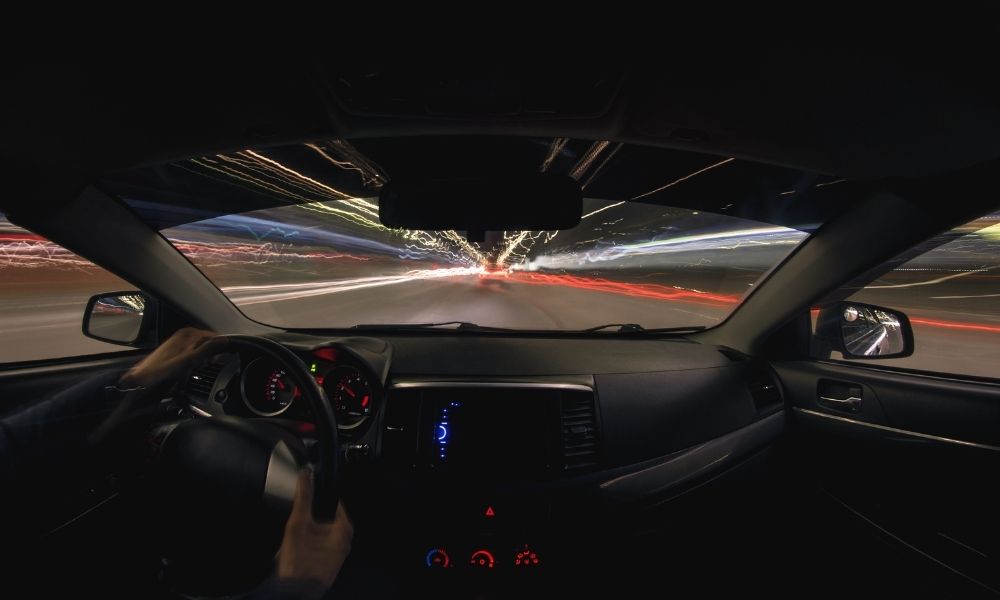Driving is an important life skill, but it might not be the easiest when you’re a newly-minted driver.
There are so many things to watch out for.
There are so many things to think about.
No worries.
In this article, we’re giving you 6 driving tips for beginners. These will help you be a better and safer driver.
On top of that, we’ll also talk about the don’ts of driving — the common mistakes that new-time drivers usually go through.
So buckle up and let’s go!
5 Common Mistakes New Drivers Make
It pays to know the most common mistakes new drivers make. It increases your awareness and decreases the probability of it happening.
So let’s look at the 5 most common mistakes.
Not Making Your Car Fit You
As a teen, chances are you’re sharing a car with your family. If so, there’s a possibility that they’ve adjusted the car’s settings to suit them.
Unless you have the exact same height and built as that person, you’ll have to do the same adjustments when it’s your turn to drive the car. It means finding the best driving position for YOU.
This includes your chair’s height and distance from the steering wheel. You need to make sure that you can comfortably reach the pedals and the gear shift.
You also need to adjust accessories such as side and rearview mirrors. Remember, they’re there to help you avoid blind spots.
It’s best to do all these before even leaving your house. You know you’ve started the process too late when you find yourself making adjustments while on the road.
Inappropriate Driving Speed

New drivers often have a hard time gauging how fast they’re going. As a result, they tend to drive too fast or too slow.
Everyone knows the danger of speeding. If you need to brake suddenly, it may lead to a collision.
It also makes safety equipment less effective. For example, even if your car has airbags, you’re more likely to suffer from severe injuries.
However, driving too slow is equally dangerous. Although its effects aren’t as evident as speeding, they are present.
You may cause traffic to congest and even block lanes. These may cause other drivers to make rash decisions to extract themselves from the situations. It may lead to them (and you) getting into an accident.
Road rage is also a common effect of driving excessively slow. Whether or not you’re a beginner, dealing with an agitated driver is never easy.
Tailgating
Besides driving too fast or too slow, you may also find yourself too close to the car in front.
This increases your risk of colliding with the car in front if they suddenly step on the brakes. Having enough space allows you to stop or swerve to avoid a crash.
An effective way to determine if you’re keeping a safe distance is by following the 3-second rule.
For example, choose a stationary object along the road, say, a tree or a sign. Once the vehicle in front of you passes it, slowly count 3 seconds.
If you pass the object before you finish counting, it means you’re driving too closely.
Not Using Car Communication Tools
Just because you’re inside the car doesn’t mean you don’t have the means to let other drivers know your intentions. Your signal lights and horns are communication tools.
Signal lights are your way to tell other drivers what you intend to do. This way, they can adjust their driving behavior to ensure nothing happens.
Avoid overusing your horn, though. It’s best to honk it sparingly and only to warn others.
Driving While Distracted
Most states enforce laws against distracted driving — and it’s no surprise. Several things can take your attention off the road.
While state regulations typically revolve around text messaging or cellphone bans, you must understand that distracted driving goes beyond gadget use.
Eating in a car, paying more attention to your friends, and playing music too loudly can cause you to divert your attention.
6 Driving Tips for Beginners
It’s not just about the don’ts — it’s also about the dos.
More than knowing what mistakes to avoid, here are some tips to remember.
Be familiar with your car
Everything in your car has a purpose, and it’s crucial you know what these are.
You must understand your dashboard and its symbols. This way, you know what to do when one lights up.
Know where the controls are. This could mean turning your lights on and activating your windshield wipers.
This is important as it’s dangerous to fumble with knobs and buttons when you’re moving.
At the very least, it adds to the things that distract you. The worst-case scenario is you’ll begin to panic, increasing the likelihood of getting into an accident.
Have a safety kit
It’s better to be prepared than to break down somewhere and not be ready.
Some items to keep in your kit are flashlights, jumper cables, and a tire iron. Ensure you have a spare tire and early warning devices.
Pay attention to road signs
Sometimes the speed limit changes across different parts of the same stretch of road. You need to be aware of the road signs to ensure you don’t accidentally commit a violation.
Brush up on your knowledge about what an image means when you come across it.
Know which lane to use
Like the instruments on your dashboard and the different street signs, each lane also has a purpose.
Move to the right-most lane early if you know you’re nearing an exit. Switching lanes at the last minute may cause you to cut off other drivers.
Remember that the left lane is generally used to pass another vehicle and left exits. The center lane is the safest choice if you’re not exiting soon.
When the weather changes, so should your driving behavior
You can’t expect your car to operate and respond the same way across all weather conditions.
Road conditions change when it rains or snows. When it’s wet out, increase your stopping distance and slow down.
If you don’t think you’ll be comfortable driving in bad weather, better to stay off the road than put yourself (and others) in danger.
Be sober when you’re behind the wheel
In most states, you need to have a Blood Alcohol Concentration (BAC) of 0.8% to be legally drunk. However, you don’t need to be in that state to be an ineffective driver.
Having two bottles of beer increases your BAC to 0.2%. You’re still functioning at the point, but it doesn’t mean your driving skills aren’t impaired.
You may already have difficulty keeping your eyes on a moving object and multitasking. Unfortunately, both are crucial when you’re driving.
The Wrap Up
Don’t worry — driving will eventually become second nature. But when you’re a beginner, it’s vital to build good habits from the start.
Watch out for the common mistakes — now that you know what these are, you’re more likely to avoid them.
The driving tips may sound like common sense, but you’d be surprised how easily some of these slip our minds.
Remember, a good driver always thinks about safety first — not just your own, but others too.
Happy driving!
